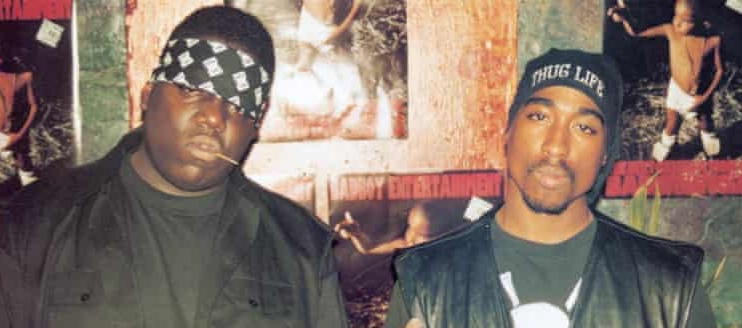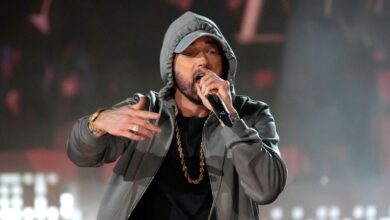Inside Tupac Shakur and The Notorious B.I.G. Beef: A Tragic Rivalry That Defined Hip-Hop

The feud between Tupac Shakur and The Notorious B.I.G. remains one of the most infamous and tragic rivalries in hip-hop history. What began as a dispute between two of the genre’s most iconic figures quickly escalated into a deadly conflict, leaving a lasting impact on the culture and the lives of those involved. To this day, their beef continues to captivate fans and scholars alike, with many still wondering how things went so wrong.
The Beginning of the Beef: A Collision of Worlds
Tupac and Biggie were two of the most influential rappers of the 90s, but their paths initially crossed under different circumstances. Tupac, the fiery, politically conscious artist from the West Coast, had quickly risen to fame with his sharp lyrics and charismatic presence. Biggie, on the other hand, was a laid-back storyteller from Brooklyn whose debut album, Ready to Die, was already solidifying him as one of New York’s finest.
Their rivalry didn’t emerge overnight—it was fueled by a combination of misunderstandings, jealousy, and the pressures of an industry constantly pushing its stars toward competition. One of the first major sparks came in 1994, when Tupac was shot multiple times in a robbery at the Quad Recording Studios in New York. At the time, Tupac believed that Biggie and his associates were somehow involved, or at the very least had prior knowledge of the attack. Although there was no direct evidence linking Biggie to the shooting, Tupac’s animosity toward him began to build.
The Media and The East Coast vs. West Coast Divide
The East Coast-West Coast rivalry was already simmering in hip-hop by the mid-90s, with tensions escalating between artists, fans, and record labels. The media played a crucial role in inflaming this divide, often sensationalizing minor incidents and creating narratives that painted both coasts as bitter enemies. Tupac and Biggie became the faces of these regions, representing the larger battle between the two coasts.
Tupac’s fiery outbursts and public accusations added fuel to the fire. He accused Biggie of betraying him and conspiring with his enemies, which further strained their relationship. On the other hand, Biggie, who had always been more reserved in public, was forced to respond to Tupac’s allegations, often through his music. Although Biggie maintained that he had no part in the Quad shooting, the animosity continued to grow.
The Role of Music: Diss Tracks and Recriminations
The beef was primarily played out in the music. Tupac’s Me Against the World and All Eyez on Me albums featured disses aimed at Biggie and his crew. Songs like “Hit ‘Em Up,” in which Tupac accuses Biggie of being involved with his ex-girlfriend and betraying him, are now infamous for their raw, unrelenting hostility. In the track, Tupac doesn’t hold back, openly challenging Biggie and threatening to ruin his career.
Biggie, however, was initially more subtle in his responses. His 1995 hit, “Who Shot Ya?” was widely interpreted as a response to Tupac’s shooting, though Biggie himself denied any involvement. The track only deepened the rift between the two, with Tupac interpreting it as an admission of guilt. Over time, Biggie’s responses became more direct, including his 1997 hit, “Kick in the Door,” where he took shots at several of his rivals, including Tupac.
The Turning Point: Tupac’s Imprisonment and the Rise of Death Row Records
The tension reached a boiling point in 1995 when Tupac was convicted of sexual assault and sent to prison. While incarcerated, he became further entrenched in the conflict, as Suge Knight and Death Row Records took him under their wing. Suge Knight, known for his aggressive tactics, amplified the East Coast-West Coast feud, using Tupac’s anger and passion for the conflict as a weapon.
It was around this time that Tupac’s persona began to shift from that of a revolutionary artist to a more violent, aggressive figure. His association with Death Row and the rise of tracks like “2 of Amerikaz Most Wanted” solidified his position as a champion of the West Coast, while Biggie’s status as the leader of the East Coast was cemented with his growing commercial success.
The Tragic End: Tupac’s Murder and Biggie’s Death
In September 1996, Tupac Shakur was tragically gunned down in Las Vegas at the age of 25. His murder remains unsolved to this day, and while there have been numerous theories and investigations, the true culprit(s) remain unknown. Many believed that his death was the culmination of the violent rivalry between him and Biggie, though no direct evidence has ever linked Biggie to Tupac’s murder.
Just months after Tupac’s death, Biggie Smalls was murdered in a drive-by shooting in Los Angeles in March 1997, at the age of 24. Like Tupac’s death, Biggie’s murder remains shrouded in mystery, with conspiracy theories abound, many of which suggest that both murders were part of the larger East Coast-West Coast conflict.
Legacy and Reflection
The deaths of Tupac and Biggie at such a young age left a void in the hip-hop world that has yet to be filled. The rivalry between them, while tragic, ultimately became one of the defining moments in hip-hop history. It highlighted the dangers of violence, the destructive influence of media sensationalism, and the way in which egos and pride can escalate conflicts to deadly proportions.
Though their feud ended with both men losing their lives, their legacies continue to shape hip-hop today. Tupac’s messages of social justice, revolution, and introspection still resonate with fans, while Biggie’s storytelling ability, flow, and charisma have cemented his place as one of the greatest rappers of all time.
In retrospect, the Tupac and Biggie beef serves as a cautionary tale for the hip-hop community and beyond. Their untimely deaths are a reminder of the fragility of life and the need for unity rather than division, especially in the face of an industry that thrives on conflict.




